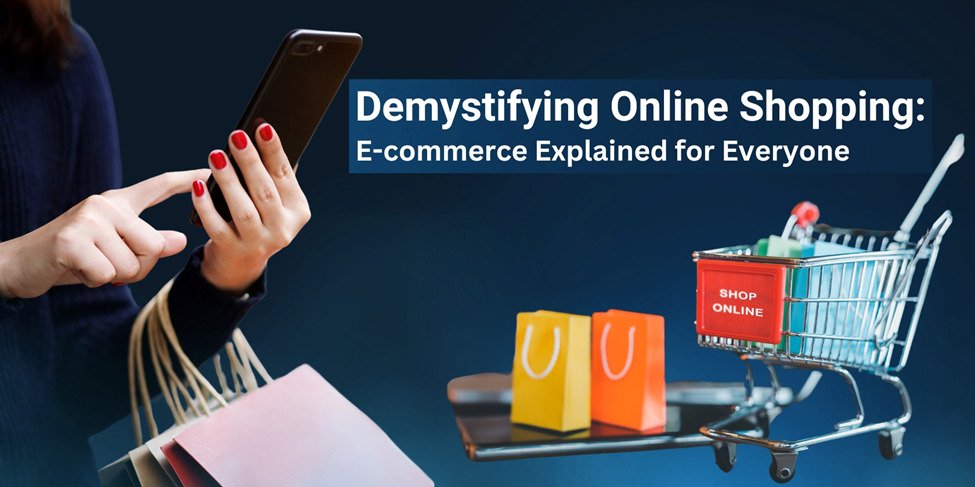In today’s digital age, the concept of shopping has undergone a significant transformation, moving from traditional brick-and-mortar stores to the vast, ever-expanding world of online marketplaces. This shift has been largely driven by the advent of e-commerce, a term that has become synonymous with convenience, variety, and accessibility. But what exactly is e-commerce, and how has it changed the way we shop? This article aims to demystify the world of online shopping, breaking down the complexities of e-commerce into understandable segments for everyone.
What is E-commerce?
E-commerce, short for electronic commerce, refers to the buying and selling of goods or services using the Internet and the transfer of money and data to execute these transactions. It’s a broad term that encompasses a range of different shopping forms, from retail sites, through auction or music sites, to business exchanges trading goods and services between corporations. If it involves conducting business over the Internet, it falls under the e-commerce umbrella.
The Evolution of E-commerce
The journey of e-commerce began in the 1960s with the development of electronic data interchange (EDI), which allowed companies to carry out electronic transactions. The real game-changer, however, came with the introduction of the World Wide Web in the 1990s, which opened up new avenues for online transactions and led to the establishment of major online retailers. Since then, e-commerce has grown exponentially, driven by technological advancements, increased internet accessibility, and changing consumer behaviors.
Types of E-commerce Models
E-commerce can be categorized into four main types based on the nature of the transactions:
- B2C (Business to Consumer): This is the most common form of e-commerce, involving transactions between online businesses and individual consumers. Examples include online retail giants like Amazon and eBay.
- B2B (Business to Business): This model involves transactions between businesses, such as manufacturers and wholesalers or wholesalers and retailers.
- C2C (Consumer to Consumer): Platforms like eBay and Craigslist allow individuals to sell goods and services to each other.
- C2B (Consumer to Business): This less common model involves individuals selling products or services to businesses, such as freelance services or stock photography.
The Benefits of E-commerce
E-commerce offers numerous benefits over traditional retail, including:
- Convenience: Shopping can be done anytime, anywhere, without the need to visit a physical store.
- Wider Selection: Online stores often offer a broader range of products than physical stores.
- Price Comparisons: Consumers can easily compare prices and find the best deals.
- Personalization: E-commerce platforms can provide personalized shopping experiences based on user preferences and browsing history.
Challenges in E-commerce
Despite its advantages, e-commerce also faces several challenges:
- Security Concerns: The risk of fraud and data breaches can deter customers from shopping online.
- Lack of Personal Touch: Some consumers prefer personal interaction and the ability to physically inspect products available in traditional retail.
- Logistical Challenges: Shipping costs and delivery times can be significant drawbacks for both businesses and consumers.
The Future of E-commerce
The future of e-commerce is bright, with continuous innovations shaping the way we shop online. Emerging technologies like artificial intelligence (AI), augmented reality (AR), and blockchain are set to further enhance the online shopping experience, making it more interactive, secure, and efficient.
Embracing AI and AR
AI can personalize shopping experiences by recommending products based on browsing and purchase history. At the same time, AR allows consumers to visualize products in their own space before making a purchase. These technologies are making online shopping more engaging and helping to bridge the gap between the digital and physical worlds.
The Role of Blockchain
Blockchain technology promises to revolutionize e-commerce by enhancing security and transparency. It can help in combating fraud, ensuring the authenticity of products, and streamlining supply chains, making transactions more trustworthy and efficient.
Conclusion
E-commerce has fundamentally changed the landscape of retail, offering unparalleled convenience, variety, and accessibility to consumers worldwide. While it presents certain challenges, the ongoing advancements in technology continue to improve and refine the online shopping experience. By demystifying the complexities of e-commerce, we can better appreciate its benefits and potential, making informed choices as consumers in the digital age. As we look to the future, it’s clear that e-commerce will continue to evolve, further transforming our shopping habits and the retail industry at large.

